Please click here to access the main AHDB website and other sectors.
- Home
- Knowledge library
- Cut flower species with potential for UK commercial production
Cut flower species with potential for UK commercial production
Here we summarise the outcomes of trials on seven species tested for their commercial potential for UK production at the National Cut Flower Centre (CFC) in Lincolnshire between 2019 and 2023.
The National Cut Flower Centre was funded by AHDB over 12 years to run a range of trials relevant to UK commercial cut flower production. The outcomes of many of these trials have been summarised in technical guidance information which can be found from the Cut Flower Resources index on the AHDB Horticulture and potatoes archive website.
Aster Ericoides
Aster ericoides is a product that is imported to the UK mainly for use as a filler in mixed bouquets. It naturally flowers in the Autumn but can be manipulated to produce an AYR crop using blackouts and night break lighting. The CFC investigated the crop in 2014 and 2015, and it was again included in the 2021 trials following a request from the industry to revisit the crop. The trial was planted in week 20 of 2021 using numerous single flowering varieties at a density of 12 plants/m2 and using two layers of support wire. The trial flowered throughout October, but the stems were far too bulky and heavy to be used as a filler so in 2022 half of each plot was cut back to the ground in week 23 to encourage a larger number of lighter stems. This was partially successful but cutting back another 2 weeks later may have produced more of the required sized stems. Asters are very prone to downy mildew and a regular spray programme is required from early in the season.
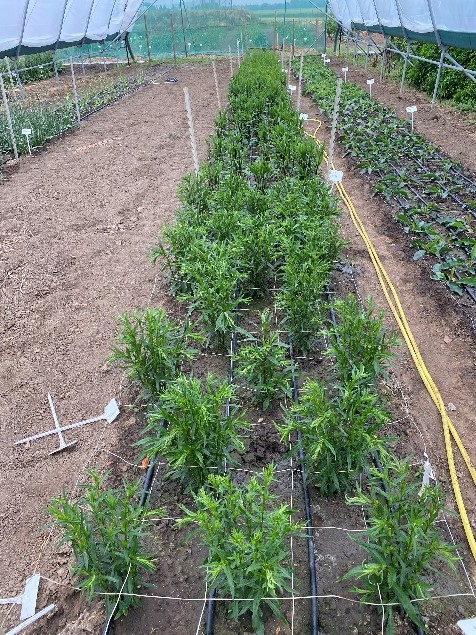 c/o Lyndon Mason
c/o Lyndon Mason
Trial in 2021 six weeks after planting
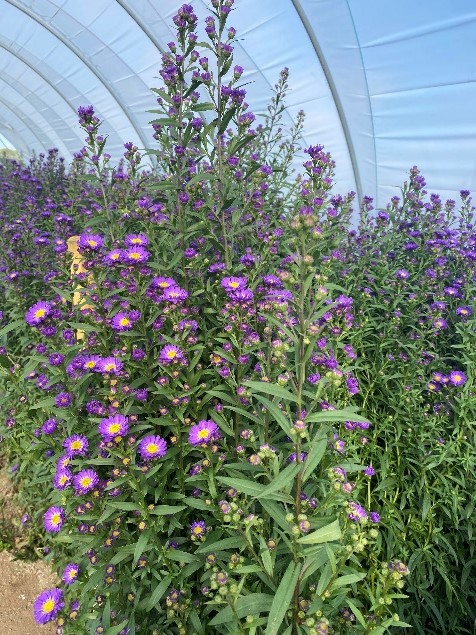 c/o Lyndon Mason
c/o Lyndon Mason
Trial in flower in early October 2021
 c/o Lyndon Mason
c/o Lyndon Mason
Half of the plots cut back in week 23 of 2022
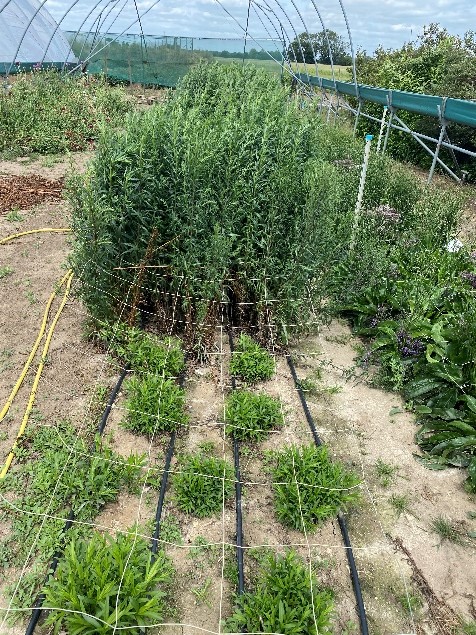 c/o Lyndon Mason
c/o Lyndon Mason
Regrowth in week in week 26 of 2022
Astrantia
New varieties of Astrantia i.e. ‘Sparkling Pink and Red Stars’ were planted in Spanish Tunnels during week 33 of 2018 at a spacing of 6 plants/m2. The crop was grown for a further three years and each year produced a heavy flush from around week 19 onwards with good quality stems of around 65 to 70cm in length. The crop was relatively easy to grow and suffered from very few P&D issues except for Two Spotted Spider Mite in 2019 and leaf miner in 2020. A prophylactic spray programme was used in 2021. The trials received a lot of positive comments from growers, packers and supermarkets and, with a vase life in excess of 10 days, it has good market potential.
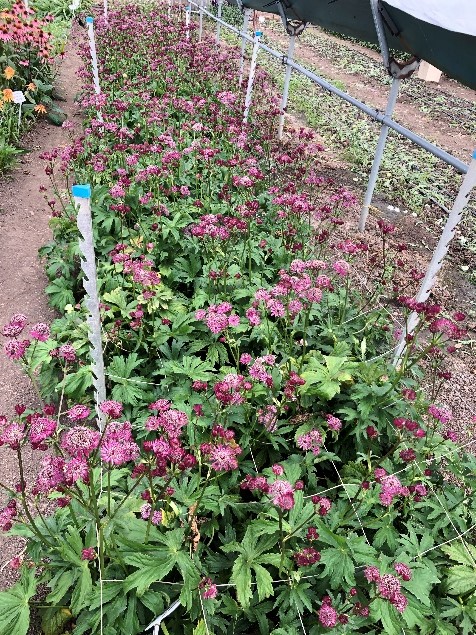 c/o Lyndon Mason
c/o Lyndon Mason
Crop in full flush
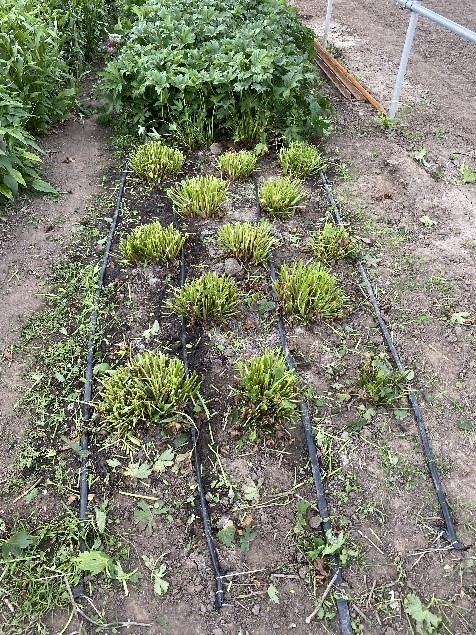 c/o Lyndon Mason
c/o Lyndon Mason
Crop cut back to encourage a fresh flush
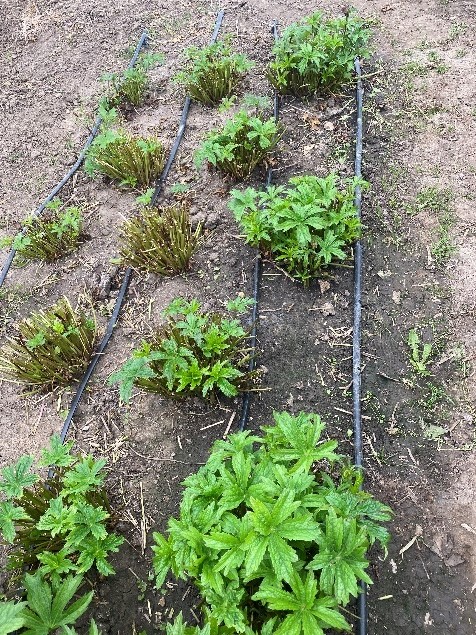 c/o Lyndon Mason
c/o Lyndon Mason
Regrowth two weeks after cutting back
 c/o Lyndon Mason
c/o Lyndon Mason
Good stem length
Echinacea
A number of varieties of Echinacea (including ‘Green Jewel,’, ‘Marmalade’, ‘Sombrero Hot Coral’ and ‘Summer Cocktail’) were planted in late 2018 and assessed in 2019. The planting density was 5 plants/m2 using one layer of support wire. In 2019 the crop flowered from week 28 onwards and produced strong stems more than 50cm long which were harvested just as the petals started to show colour. There was limited interest from the supermarkets in this product, but it could have potential for direct retail sales.
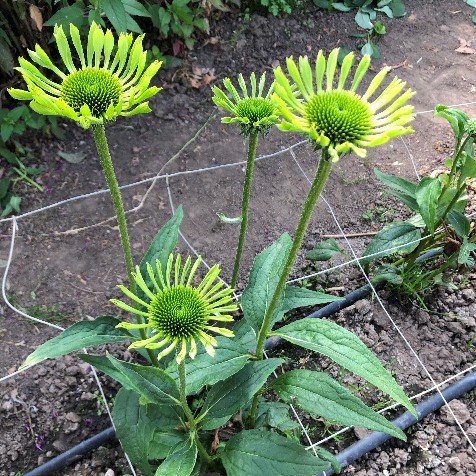 c/o Lyndon Mason
c/o Lyndon Mason
Echinacea ‘Green Jewel’
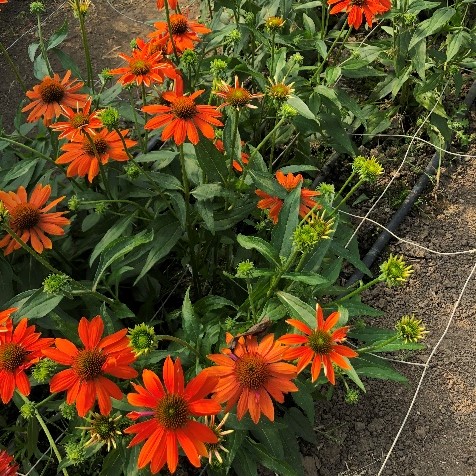 c/o Lyndon Mason
c/o Lyndon Mason
Echinacea ‘Summer Cocktail’
Lepidium
‘Green Dragon’, a new variety of Lepidium was trialled in a Spanish tunnel from plantings in weeks 23 and 25 of 2019. Trials included plants from home produced plugs, plugs from Florensis and plugs from the breeder (Danziger). These were planted at a density of 25 and 64 plants/m2. All formats grew away vigorously, and the crop was ready to harvest within 7 to 8 weeks from planting. The trial produced a very dense crop with stems being consistently 60 to 70cm in length. Once over harvesting and then graded down the line is best suited for this crop and the density of 25 plants/m2 fits best for this. Vase life is known to be at least 10 days and there is a lot of market interest in this crop as a green filler in mixed bouquets. P&D was not a major issue but being a member of the Cruciferae family, flea beetle can be a problem.
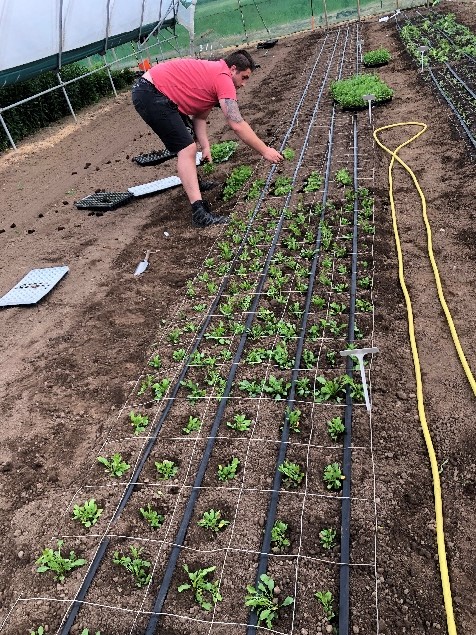 c/o Lyndon Mason
c/o Lyndon Mason
Planting the trial
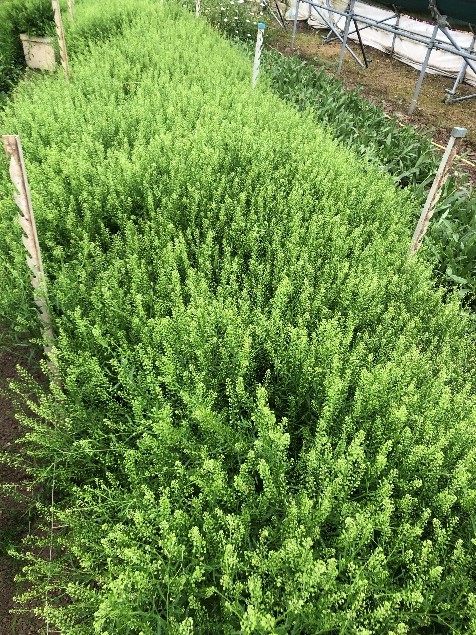 c/o Lyndon Mason
c/o Lyndon Mason
Ready to harvest
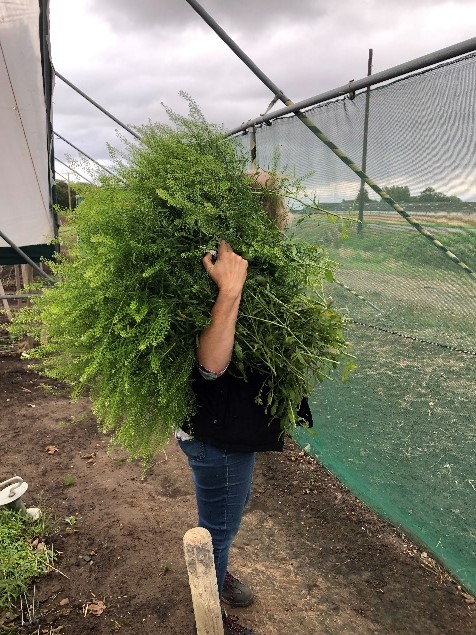 c/o Lyndon Mason
c/o Lyndon Mason
Once over harvesting
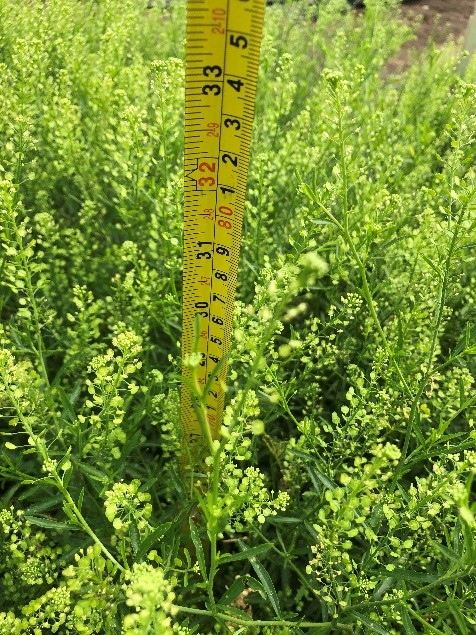 c/o Lyndon Mason
c/o Lyndon Mason
Good stem length
Statice (Limonium sinensis)
While widely grown in Holland, very little Statice is grown in the UK and what little is grown is direct seeded. New varieties of micro-propagated statice from Danziger called ‘Sensy’ were offered to the CFC in 2021 and 2022. These were planted in week 19 at a density of 8 and 13 plants/m2 with one level of support wire. No specific P&D issues were seen in either year of the trial. The crop was ready to harvest from week 34 and produced superb strong stems in excess of 1m long and a vase life in excess of 13 days. Very even stem maturity means that once over harvesting is applicable and the 2022 trial produced an average of 100 stems/m2. Overall, the trials showed real potential for these new varieties but being micro-propagated, the young plants are very expensive and hence a premium stem price will be required to make the crop viable.
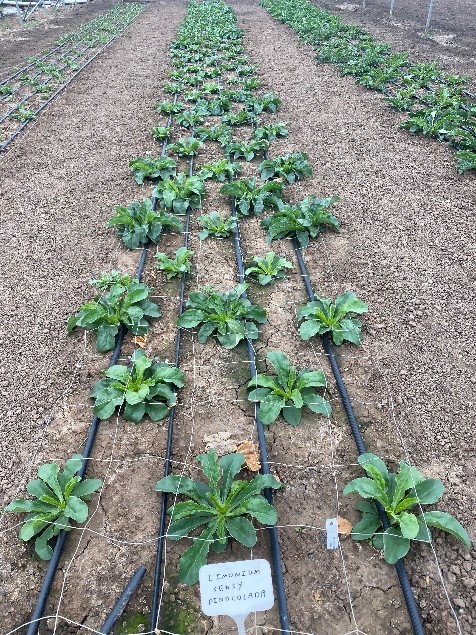 c/o Lyndon Mason
c/o Lyndon Mason
Statice trial 6 weeks after planting in 2022
 c/o Lyndon Mason
c/o Lyndon Mason
Trial beginning to bud up in week 28
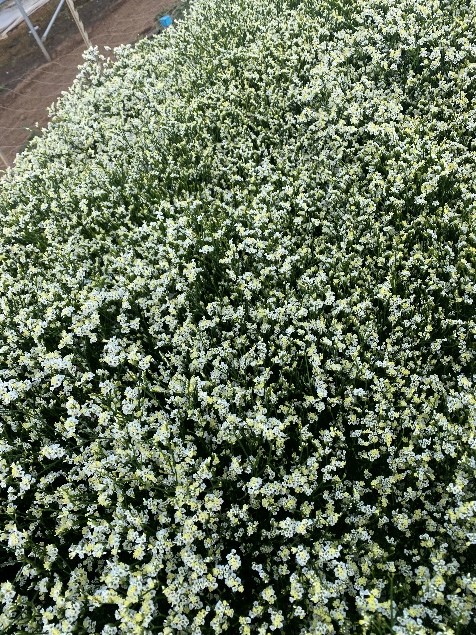 c/o Lyndon Mason
c/o Lyndon Mason
Trial ready to harvest in 2022
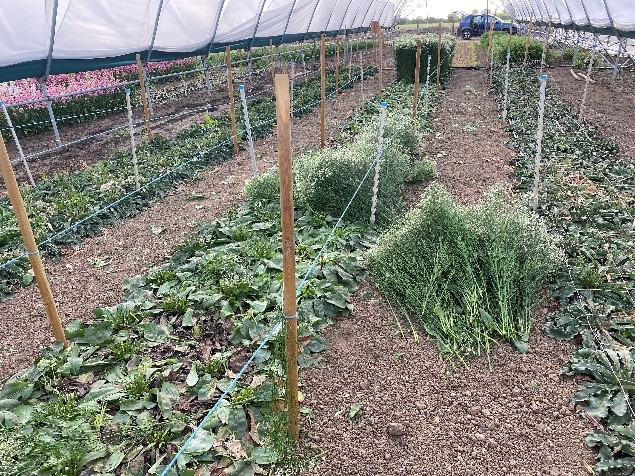 c/o Lyndon Mason
c/o Lyndon Mason
Once over harvesting of trial in week 36 of 2022
Trachelium caeruleum
Trachelium had been trialled in the early days of the CFC but despite producing a good crop, there has been very little take up by the industry. Owing to a request from the industry a further trial using Michigan Blue and White were planted at a density of 25 plants/m2 in week 23 of 2021. The crop grew away with very few problems and produced strong stems in excess of 50cm long, the first being harvested in week 34. These and previous trials have shown that Trachelium has the potential to be produced in the UK giving a fresher more vibrant product with a potentially longer vase life.
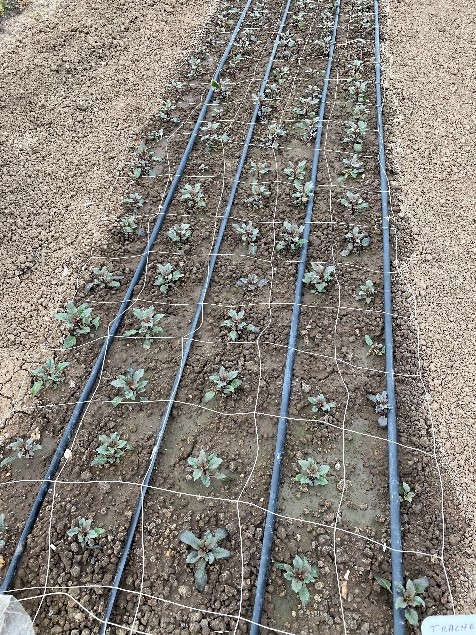 c/o Lyndon Mason
c/o Lyndon Mason
Trial in week 25 – 2 weeks after planting
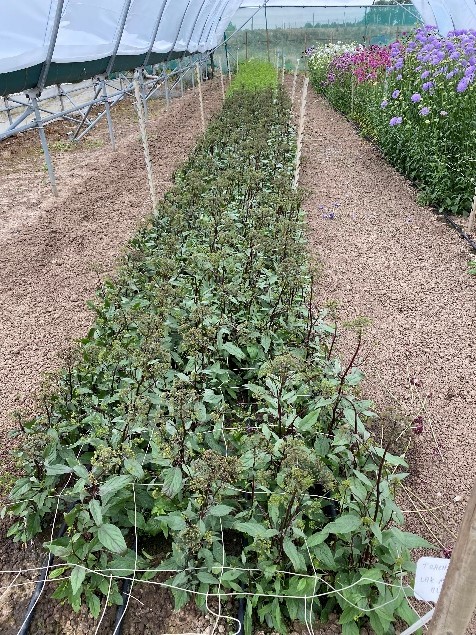 c/o Lyndon Mason
c/o Lyndon Mason
Trial budding up in week 30
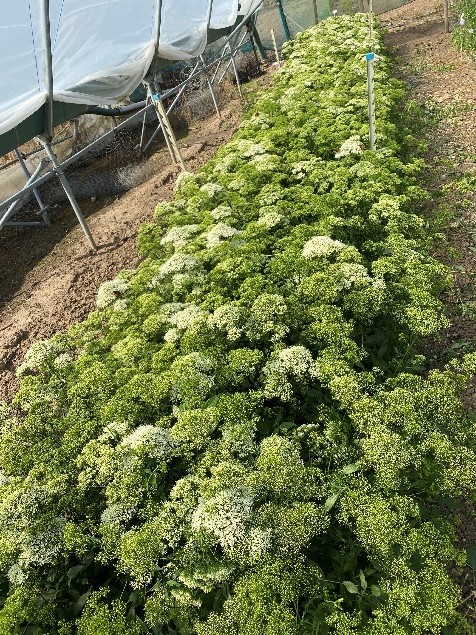 c/o Lyndon Mason
c/o Lyndon Mason
'Lake Michigan White' in week 34
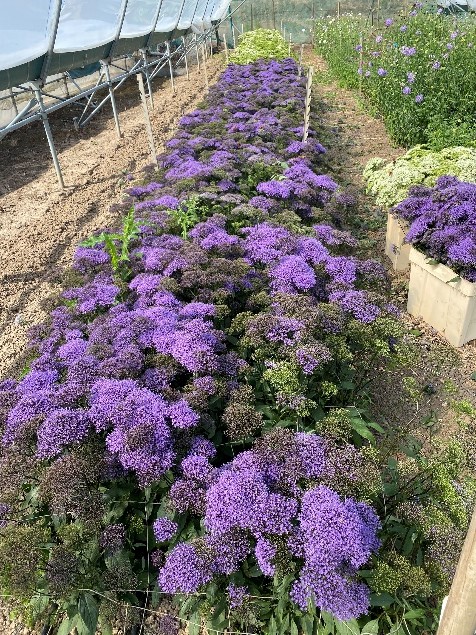 c/o Lyndon Mason
c/o Lyndon Mason
'Lake Michigan Blue' in week 34
Veronica longifolia
A perennial crop of Veronica longifolia, ‘Skyler Blue, Pink and White’ was trialled between 2018 (planted in week 18) and 2021 when the crop was removed. From the second year onwards a first heavy flush of stems occurred in around week 25 and a second lighter flush in late summer. The quality of the second flush depends on weather conditions and if hot it is a struggle to achieve an acceptable stem length and strength. A prophylactic powdery mildew spray programme is required throughout the life of the crop and to ensure adequate air movement a planting density of 12 plants/m2 is advisable with one layer of support wire. The first flush in 2019 suffered from a degree of fasciation thought to have been caused by weather factors because it was also seen on garden plants but was not evident in the second flush. Removal of the centre bud (as soon as it is large enough to rub out) was also trialled and this produced a much heavier, longer and more floriferous stem more suitable for use in mixed bouquets.
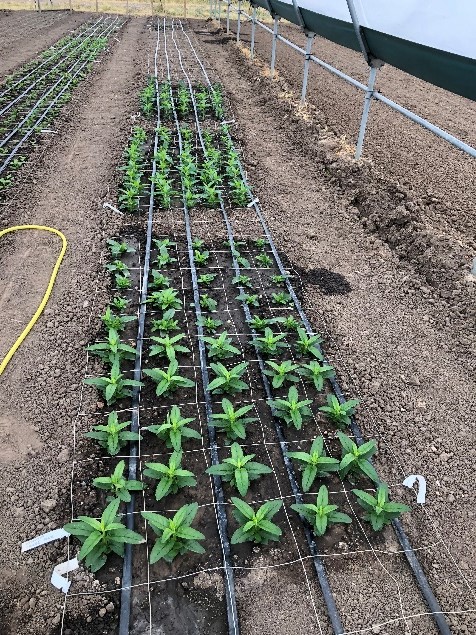 c/o Lyndon Mason
c/o Lyndon Mason
Trial two weeks after planting in 2018
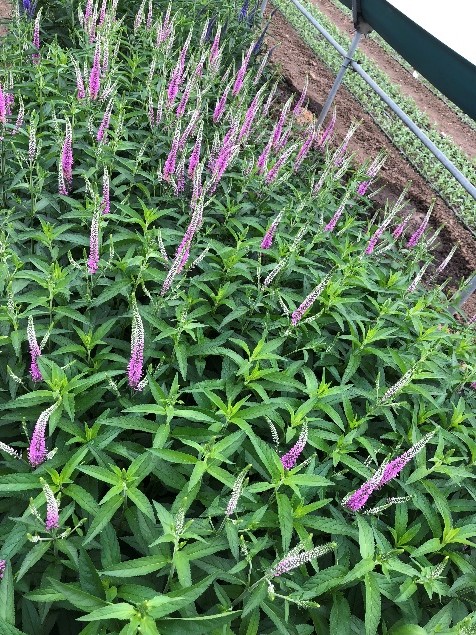 c/o Lyndon Mason
c/o Lyndon Mason
First flush of Skyler pink in week 31 of 2018
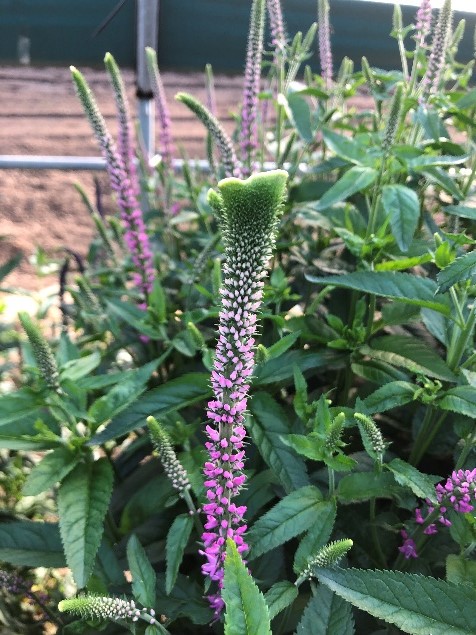 c/o Lyndon Mason
c/o Lyndon Mason
Fasciation of Skyler pink in 2019
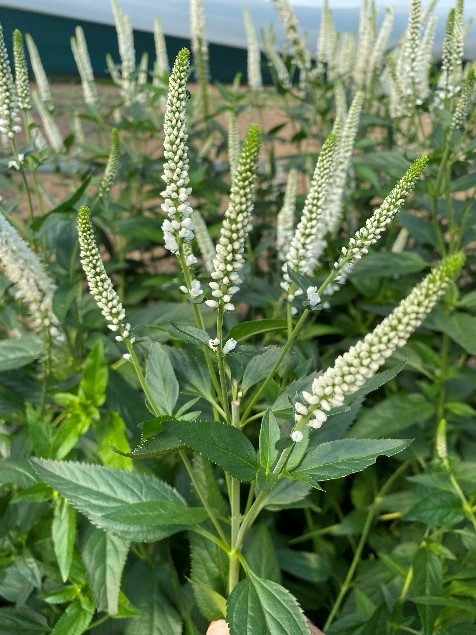 c/o Lyndon Mason
c/o Lyndon Mason
Skyler white after removal of central bud
Author
Lyndon Mason

